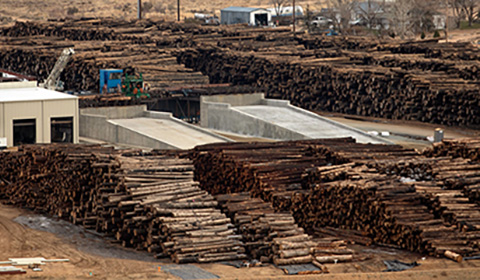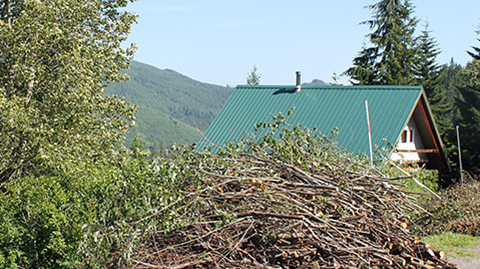
Timber products have been sustaining the American way of life for centuries and are deeply rooted in our culture.
Much has been learned about sustainable forest management, timber harvesting and forest ecology since federal management began on our forests in 1870 and the evolution of the timber industry remains crucial to meet the demands of modern life.
One way the Forest Service supports innovation in the forest products economy is through Wood Innovations Grants, which launched in 2015 to support America’s forests by creating and expanding both utilization and markets for sustainable wood products and wood energy.

Timber for tall buildings
In Salt Lake City, the University of Utah’s Department of Civil and Environmental Engineering received $175,000 to test and certify a sophisticated timber-steel brace designed to shore up tall buildings against earthquakes and high winds.
Currently, there is only one other system on the market to protect tall buildings against such forces, according to Chris Pantelides, a professor with the University of Utah’s Environmental Engineering Department.
So far, professor Pantelides, his colleagues and students have designed and tested a prototype and now plan to move forward in testing a larger model and eventually a full-scale version. During the tests, they will assess which types of timber and steel are strongest. The team also plans to develop software that seamlessly incorporates the timber-steel braces into architectural plans for industrial buildings.

Scrap wood for pallets
Using a $300,000 Wood Innovations grant, Tahoe Forest Products in Carson City, Nevada, will design, and install a specialized production line to process small-diameter logs at their new commercial sawmill on land owned by the Washoe Tribe of Nevada and California. The small trees that need to be cut and removed from the forest are usually not a marketable material. This new system will use these smaller trees to produce 2x4s or made into pallet stock, according to Kevin Leary, chairman of Tahoe Forest Products.
Tahoe Forest Products started construction in 2022 and supports work to salvage and clean up timber – large and small – in areas impacted by devastating wildfires.
The Tahoe Basin is located on the Sierra Front, which earlier this year was designated as one of 21 high-risk landscapes in the western U.S. as part of the National Wildfire Crisis Strategy.

Logs for heating homes
Another grant designated $1 million to the Washoe Tribe of Nevada and California to purchase commercial grade equipment and hire workers to expand their firewood processing and delivery program in Gardnerville, Nevada. Their program provides firewood to tribal members in need throughout the state to help heat their homes during the cold months.
“Firewood is part of the tribal culture and a connection to ancestry,” Quiner said. “Our firewood supports tribal elders physically, spiritually, emotionally, and economically. Last year, some tribal members across Nevada were spending as much as $600 per cord for firewood, which is expensive and unsustainable. Without the firewood we produce, many would have to rely on expensive gas and propane heat, which really raises their cost of living.”
Previously, the tribe was processing several thousand cords of firewood every year. Workers at the tribe’s timber yard were using chainsaws and household firewood splitters – a tedious process. With new equipment, they now expect to easily double their production, according to Ken Quiner, firewood delivery program manager. With the grant money, the tribe purchased an industrial grade firewood processer and a range of heavy equipment to facilitate cutting and transporting timber and firewood.

Supporting forest health
“These grants are important because we recognize there are areas in need of expansion to optimize and advance the production and use of wood products while offering solutions to help lower the risks of wildfires,” said Chris Clark, a wood innovation specialist for the Forest Service’s intermountain and northern regions.
“Thinning trees and pulling deadwood off forests is often needed to meet our management objectives to restore healthy, resilient, and fire adapted forests. These forest products support the needs of rural communities and create jobs.”
These grants support timber operators and forest products manufacturers and make important forest management activities possible, like thinning forest stands and reducing wood debris that could fuel a potential wildfire.
Managing forests helps restore forest health and protect communities from the threat of wildfire. It also creates jobs in the local economy.
Wood Innovations Grants support entities across the public and private sectors. For-profit entities, state and local governments, tribes, school districts, community-based non-profit organizations, institutions of higher education, and special purpose districts are all eligible to apply.
For more information on the USDA Forest Service’s Wood Innovation Grants, visit the Forest Service Wood Innovations page.





